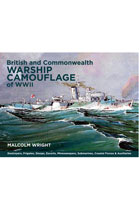British Submarines in Two World Wars (Hardback)
National publicity!
As seen in the Daily Mail, May 2019: 'Britain's battle beneath the waves – The Royal Navy submarines and their fearless crews who played crucial role defending UK in two world wars'
(click here for international delivery rates)
Order within the next 39 minutes to get your order processed the next working day!
Need a currency converter? Check XE.com for live rates
| Other formats available | Price |
|---|---|
| British Submarines in Two World… ePub (65.2 MB) Add to Basket | £20.00 |
Although the Royal Navy did not invent the submarine, Norman Friedman’s new book demonstrates how innovative the service was, to an extent which few will recognise. Its submarines performed well in combat in both world wars, and often in unheralded ways. Few will be aware that in 1914 Britain had the largest submarine fleet in the world, and that at the end of World War I it had some of the largest and most unusual of all submarines – whose origins and design are all detailed.
During the First World War they virtually closed the Baltic to German iron ore traffic, and they helped block supplies to the Turkish army fighting at Gallipoli. British submarines were a major element in the North Sea battles, and they helped fight the U-boat menace. These roles led on to British submarine operations in World War II. Readers will be aware of the role of US submarines in strangling Japan, but perhaps not how British submarines in the Mediterranean fought a parallel costly but successful battle to strangle the German army in North Africa. Like their US counterparts, interwar British submariners were designed largely with the demands of a possible Pacific War, although that was not the war they fought. And the author shows how the demands of such a war, which would be fought over vast distances, collided with interwar British Government attempts to limit costs by holding down the size (and numbers) of submarines. It says much about the ingenuity of British submarine designers that they managed to meet their requirements despite enormous pressure on submarine size.
As in other books in this series, the author demonstrates how a combination of evolving strategic and tactical requirements and evolving technology produced successive types of design. The Royal Navy was always painfully aware of the threat enemy submarines posed, and British submariners contributed heavily to the development of British anti-submarine tactics and technology, beginning with largely unknown efforts before the outbreak of World War I. Between the Wars British submariners exploited the new technology of sonar (Asdic), both to find and attack enemies and to avoid being attacked themselves. As a result, they pioneered submarine silencing, with important advantages to the US Navy as it observed the British. And it was a British submarine that pioneered the vital postwar use of submarines as anti-submarine weapons, sinking a U-boat while both were submerged. This feat was unique.
Heavily illustrated with photos and original plans, this new volume from Norman Friedman, incorporating so much original analysis, will be eagerly awaited by naval historians and enthusiasts everywhere.
This book is a ‘must have volume’ for any warship enthusiast’s bookshelf and is very highly recommended.
World Ship Society - Marine News, August 2020
In this comprehensive work, all submarine types of the British Navy are comprehensively represented in text, excellent pictures and with clear drawings - a great work for everyone who is also interested beyond German submarines.
ModellWerft, February 2021
A magnificent book, one which I can't imagine ever being improved on. The level of detail in here, complete with not only a great collection of archive images, but with a lot of scale plans, including copies of many original builders drawings, there is just so much to see. I believe this is THE reference on the subject and will be a must for any serious submarine enthusiast/historian/modeller. A book of this size is not cheap, but once you see how much information it holds and the work that must have gone into it, then actually the price for a book which will be a prime reference on your bookshelf, I'd suggest it is remarkably good value for money. The research that has gone into this one shines through from beginning to end, so makes the prospect of another volume to come for the post-war period something else to look forward to.
Military Model Scene, Robin Buckland
Read the full review here
As featured by
Sea Breezes, April 2020
The over-riding impression gained from this book is the extraordinary rate and breadth of development of the submarine from the first Holland boats of 1901 to the A class of 1944. The one element that doesn’t get much of a mention is the incredible bravery and fortitude of the submariners themselves. At over 400 pages in coffee table format, a stunning collection of photos, and numerous line drawings this is an impressive high quality publication and fully merits its £50 price tag. Highly recommended.
Warship World, January/February 2020
Friedman details the evolution of British submarine design in a text sup-plemented with numerous photographs and diagrams of the boats described in it. The amount of scholarship on display is impressive, reflecting a considerable amount of archival research as well as Friedman’s own extensive familiarity with his subject. Thanks to his labours, this book can stand alongside Friedman’s other histories of British warship design as the definitive history of its subject—and with a promised second volume to come that will cover the history of British submarine design in the post-war era, one that will become part of a comprehensive overview that no scholar in the field can afford to ignore.
The Northern Mariner / Le marin du nord, XXIX, No. 2 (Summer 2019) – reviewed by Mark Klobas Phoenix, Arizona
Indispensable – afford it!
The Naval Review, February 2020 – reviewed by RICHARD CHANNON
This is a gold mine of information, and one of equal use for modellers and naval aficionados.
Airfix Model World, February 2020
Stunning documentary and visual work by Norman Friedman.
Miniaturas JM
Read the full Spanish review here
No-one can understand British submarine design and development in the period without reading this landmark book.
Navy News
This book is a well-illustrated, all-encompassing study. Friedman’s work shows the RN to be a lot more innovative in the field of submarine warfare than I previously thought. 5/5 anchors/mushroomheads.
Army Rumour Service (ARRSE)
Read the full review here
"The over-riding impression gained from this book is the extraordinary rate and breadth of development of the submarine from the first Holland boats of 1901 to the A class of 1944."
Peter Wykeham-Martin for Scuttlebutt
Reviewed by
I tried to find negatives, as positive reviews are quite dull, but really couldn't...
WW2 Talk
Well worth the price.
Would make a cracking Christmas pressie.
Seaforth do it again.
Read the full review here
Its a sumptuous and highly illustrated look at the development and use of subs in the Royal Navy.
The Armourer, November 2019
This is one of those glossy heavyweight volumes that practically jumps off any real bookshelf begging you to buy it. Over 350 pages of densely packed text, copious line drawings, builders’ drawings in full colour and many, many rare monochrome photographs are backed up by an incredibly detailed bibliography / notes section. The latter would be of great assistance to any scholar wanting to consult the source documents - or the mad keen reader not satisfied by the level of detail in this fabulous book. I can’t think there’d be many such dissatisfied readers though!
Damien Burke, author of TSR2 - Britain's Last Bomber
Read the full review here
This is an outstanding title and its quality, depth of coverage and production means we have no hesitation in awarding it our coveted SMN 5-Star Rating!
Scale Modelling Now
Watch the full video review here
From an established naval historian, the definitive book on British submarines in two World Wars. The Germans may have received the prominence in naval history for submarines, but the British had the largest fleet with the USN deploying the largest wolf packs – Most Strongly Highly Recommended.
Firetrench
Read the full review here
This book was a real eye opener for me. I thought I knew quite a lot about submarines but my knowledge paled into insignificance when found the wealth of information before me. Here is a book that tells you all you need to know about submarines. One could probably build a period submarine with little more than the plans and descriptions here laid out. But the book is more than a technical manual. The thinking and attitudes which under pinned the planning and the execution of the Royal Navy’s submarine strategy are well described... There is no dross, ‘all meat and no gravy’ as my grandfather would say.
Clash of Steel
This is a rather special book and we highly recommend it.
Read the full review here
This unique and fascinating book takes us through an amazing array of facts, figures and photographs of British submarines and their deployment in the two 20th century world wars. Lavishle illustrated with photogaphs and technical drawings, this amazing large-scale book delves deep into their history and their technical details which will delight anyone with a passing interest in these incredible vessels.
Books Monthly
Will be eagerly awaited by submarine modellers, naval historians and enthusiasts everywhere.
Model Boats, September 2019 – reviewed by John Deamer
Norman Friedman's book on submarines was a voyage of discovery [excuse the pun].
Richard Gough, Military Author and Historian
One imagines a submarine is a submarine, one is just like another but the wealth of information, detail, drawings in British Submarines in two World Wars, show how misinformed one can be. The Thetis I remember, went on sea trials off the N Wales coast shortly after launch in about 1937. She went down and never came up. Well she did because later they raised, made her seaworthy, renamed her and went into war service. Later in years when writing books on SOE in the Fast East in WW ll, I wrote on the daring deed of some T- Class vessels such as the Tally Ho working with Special Forces.
Writing gives one the privilege of meeting special people, one was an agent with MI6 during WW. He parachuted into the Malayan jungle near Penang to gather intelligence on Japanese shipping and transmit it back to Ceylon [Sri Lanka]. Contacts brought word that the Azhagar, a Japanese cruiser, was preparing to leave. An urgent signal to Ceylon brought the British submarine, Trenchant,'poste haste' to sink her in the Malacca Straits. Meanwhile another submarine Tally Ho was in the Malacca Straits to land a British agent from SOE. The sinking of the enemy cruiser brought Japanese anti submarine patrol boats to the area. They missed Trenchant but discovered the Tally Ho on the surface at night, She was rammed but survived: the mission was cancelled and limped back to Ceylon, lopsided.
There must be many stories waiting to written. Each vessel and support vessels has an history just waiting to researched!
British Submarines in Two World wars is a magnificent achievement which belongs on the bookshelves of submariners past and present as well as all those fascinated by the ‘submarine boat’.
Australian Naval Institute, Tim Coyle
Read the full review here
As with all Friedman’s books, this title is based on impeccable scholarship and analysis. For me the most valuable aspect of this is his revealing the actual decision-making processes behind the designs, the economic, political and professional pay offs that resulted in the appearance of the warships that we now know so well. On the way he brings to light much information that few will be aware of, such as the fact that in 1914 Britain had the largest submarine fleet in the world. And at the end of World War I it had some of the largest and most unusual of all submarines – whose origins and design are detailed by the author.
Julian Stockwin Blog
Read the full review here
The remarkable photos form part of acclaimed naval historian Norman Friedman's British Submarines In Two World Wars, a hugely in-depth summary of the evolution of underwater conflict and its role in the greatest wars of the 20th century.
Mail Online 27/5/19
A magnificent volume of high quality photographs, drawings and text that is a cornerstone for research and understanding of the role of the submarine in the two world wars. A stunning piece of work.
Michael McCarthy
Michael McCarthy. Battlefield Guide
About Norman Friedman
NORMAN FRIEDMAN is arguably America’s most prominent naval analyst, and the author of more than thirty books covering a range of naval subjects, from warship histories to contemporary defence issues. His most recent titles in a series of successful works for Seaforth are the two volumes of his history of British Submarines.






















